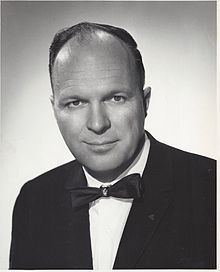Occupation Inventor, Researcher Website warrenpwaters.com Children Carolyn Waters Broe | Spouse(s) Lois Virginia Lockwood Died 17 July 2000 | |
 | ||
Notable work Early research on Germanium and Silicon transistors | ||
Warren P. Waters (8 September 1922 - 17 July 2000) was an American physicist, inventor and a World War II US Air Force Pilot. He had several device and process patents in the field of solid state engineering, that contributed to today's version of integrated circuit and was also known as the manager of Hughes Aircraft Company's solid state research center. His contributions also lead to the success of The Surveyor Project.
Contents
Education and marriage
Waters graduated from California Institute of Technology in 1949 and received his master's degree from University of Southern California in 1954. Additionally, he also completed coursework for a Ph.D. in Physics at USC before starting his professional career as an inventor.
Warren P. Waters married Lois Lockwood in 1951; a wedding ceremony that received much coverage in the print for having a sensational reception.
Military career
Waters started his career as a US Air Force Pilot in World War II, serving from 1942-1946. The US ran out of planes and eventually transferred pilots, including Waters, to the US Army where he was deployed as a machine gunman in Northern France. He lost his leg in an attack on Nazi Flak gun as a machine gunman on 12 April 1945 and was forced to retire. He received the Bronze Star and the Purple Heart for his service.
Scientific career
Warren P. Waters joined Hughes Aircraft Company in 1952 and was reported to be involved in early research work on NPN germanium transistors as well as PNP silicon transistors. In 1962, he joined Texas Instruments, Inc as manager of semiconductor research and development laboratory's advance device management branch. At TI, he was involved in development of high resolution photo-resist and diffusion techniques to fabricate 2.5 GHz, 2W transistors. These comprised Si and GaAs planar Schottky barrier diodes for microwave mixers and varactors and low noise planar Ge transistors that could operate up to and including 3 GHz. He also worked on vapor deposition of Si02 and A1203 layers that were used in diffusion masking and junction “passivation”.
However, after spending 4 years at TI, he returned to Hughes and was appointed as the manager of Hughes Aircraft Company's solid state research center in 1966. At Hughes, he worked on Microwave Devices. Notable device that he worked on were Au bonded Si Schottky barrier low noise mixer diodes that were to be used for the Surveyor Project.
Having done early phase research on silicon and germanium transistors, Waters acquired several patents in the fields of semiconductors and integrated circuits. Many of these patents were acquired by Waters during his work with Hughes.
In 1980, he joined Rockwell International and started his work on silicon wafer doping and later joined Western Digital to further his work on silicon disk purification and one megabyte hard drive.
Death
After a bad reaction to the drug Warfarin and a heart attack, Waters chose not to remain on dialysis for the rest of his life and died on 17 July 2000 from kidney failure.
Awards
Warren P. Waters received the following awards and recognition over his military and scientific career:
